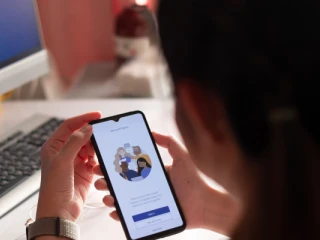Teams as entry point
Microsoft Teams allows you to have just that single entry point. Teams is mainly known as a collaboration tool, but you can also use it as a central work hub, an instrument to organize the digital workplace.
This technology boasts even more advantages that facilitate employee-centricity, rather your technology itself. All information is fully customized, tailor-made for the employee, their function, role and preferences. Services can become entirely automated. Today, automation has taken place within a tool, but in this instance, we add new features, such as bots or virtual assistants. These robots will answer standard questions automatically and only forward escalations to the respective departments. All communication (call, chat and meet) takes place within one system, no other separate tools required. With just the push of a button you can send your colleague, who published a message, a question. Within the work hub, organized work streams also have been integrated, for example an invoice approval flow or approval of a communication that needs to be published. Thanks to these optimized tasks and notifications, the entire process is managed within the work hub and no other tools, such as mails, are needed.
Last but not least, security and compliance (for example GDPR) are also integrated, enabling solid handling of information and data. You can secure data by rendering them non-downloadable or add an authentication protocol.”
Serge: “Actually, it is all fairly simple. You are always present in your communication tool. In this hub, you now also group the rest of your applications, access points and information. Apart from the standard features of Teams, you can also plug in other EX platforms, such as Microsoft Viva, SAP Work Zone, ServiceNow Quebec. Most of the time even, companies already have this technology installed.”

/blog_teams-Website-720x360-(1).webp?mode=autocrop&w=320&h=240&attachmenthistoryguid=0487f79f-261b-4f62-93fc-4eeb099b7703&v=&focusX=461&focusY=166&c=17f79b848692423079c5808e0722570f8adee8c8cf561e2f49f951d5b5e330a1)
/DynamicsInnovationWebsite720x360-(1).webp?mode=autocrop&w=320&h=240&attachmenthistoryguid=ab19b097-fc4d-4ea5-b498-85a10ae7a54b&v=&focusX=301&focusY=93&c=6742a6415cf2cfdfca8721394ea1c5f6f9eec21767717e26f17d19a2882f679e)
